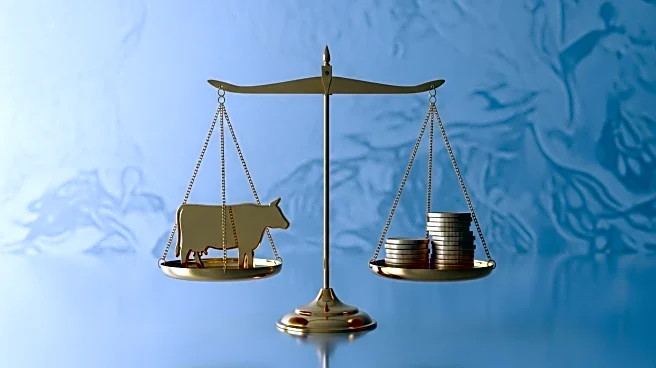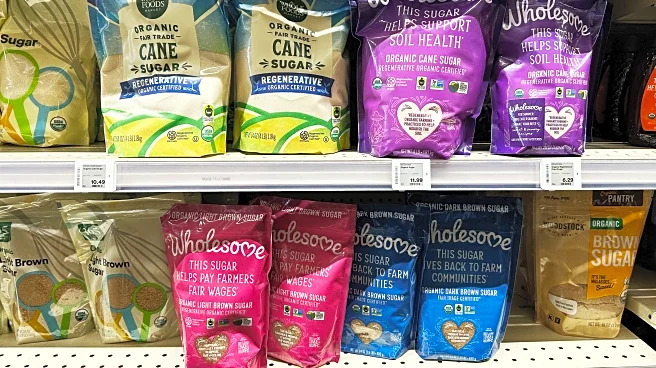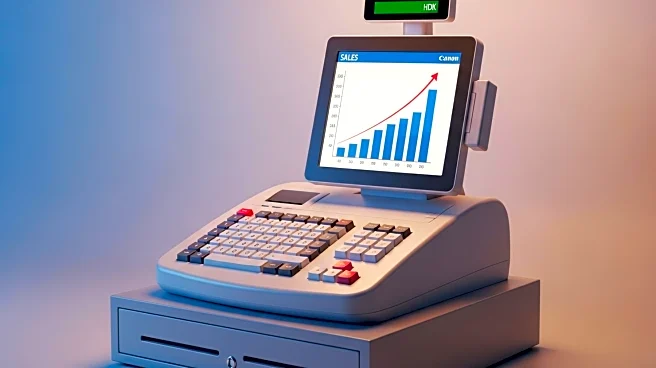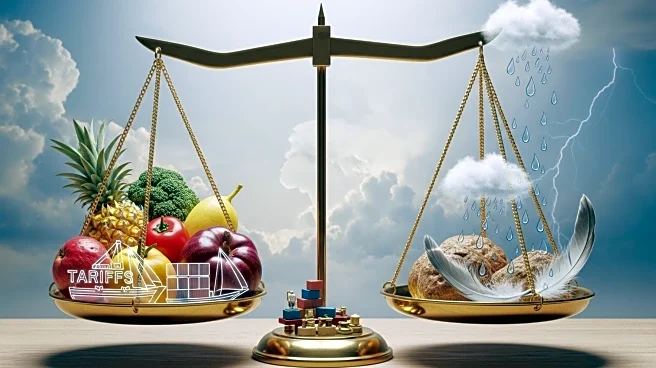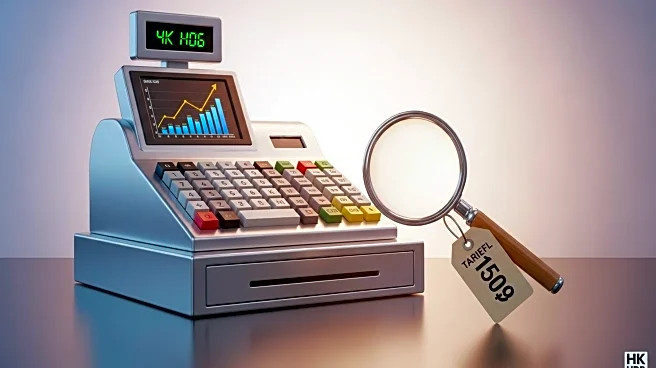What's Happening?
Beef prices have surged due to a combination of supply shortages and high demand. The U.S. beef cattle herd is at its smallest in 75 years, partly due to drought conditions and climate change. This has led to a decrease in beef production, with the USDA forecasting a 4% decline this year and another 2% in 2026. Tariffs on Brazilian beef and concerns over livestock diseases have further restricted imports. As a result, beef prices have reached historic highs, prompting consumers to reconsider their purchasing habits. Restaurants and grocery stores are adjusting by raising prices, while some consumers are opting for alternative proteins.
Why It's Important?
The increase in beef prices has significant implications for the food industry and consumer spending. As prices rise, consumers may shift away from beef, impacting demand and potentially leading to changes in the meat industry. The situation highlights the vulnerability of food supply chains to environmental and geopolitical factors, emphasizing the need for sustainable practices and diversified sourcing. Additionally, the economic pressure on consumers could influence broader spending patterns and contribute to inflationary trends.
What's Next?
The beef industry may need to explore strategies to rebuild cattle herds and address supply shortages. Consumers are likely to continue seeking alternatives to beef, potentially increasing demand for other proteins. Policymakers might face pressure to address tariffs and trade barriers affecting beef imports, which could lead to changes in trade policies.
Beyond the Headlines
The high beef prices raise ethical considerations about food accessibility and equity, as lower-income consumers may struggle to afford meat products. The situation underscores the importance of addressing climate change and its impact on agriculture, as well as the need for resilient food systems to withstand global disruptions.


